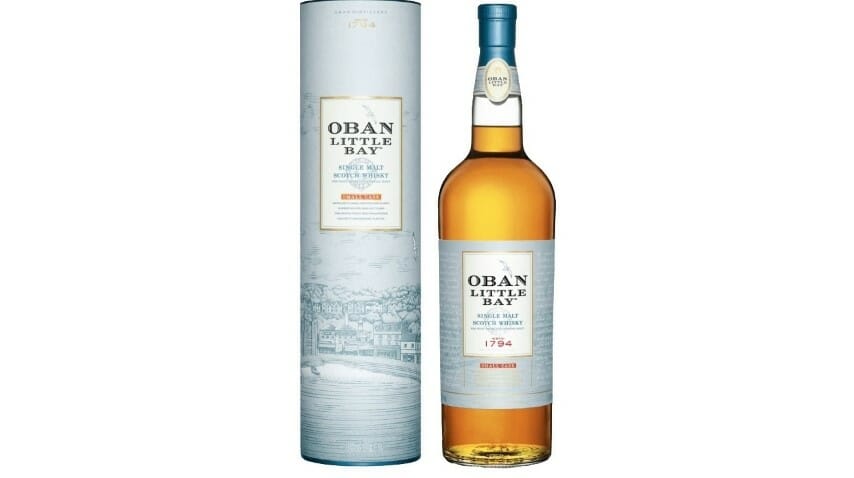Oban Little Bay Single Malt Scotch Whisky
Photos via Oban
Of all the stories or trends that have encapsulated the past decade in the scotch whisky sphere, it’s probably been the rise of non-age-statement (NAS) malts that has ultimately been the most significant overall development in terms of how it’s helped to redefine the consumer’s idea of quality whisky. The 2010s began as a decade when age statements were still viewed by most drinkers as de facto symbols or guarantees of a whisky’s baseline of quality, but by the time those 10 years had ended, much had changed. A year number on the bottle simply doesn’t carry the weight of importance it once did.
Although age statements are still certainly common for the core lineups of most classic distilleries, it’s now also become almost expected that there will be an NAS malt in that lineup of year-round products as well, often differentiated via processes such as small-cask aging or the use of virgin (newly charred) oak. These methods of accelerating the aging process by increasing surface area contact with wood or using more assertive barrels would once have been viewed as taboo by the industry at large, but such old-school resistances have begun to drop away as the definition of “scotch whisky” has become more elastic. Some drinkers might look at that development and bemoan the loss of tradition, but it’s not like the classic malts are going anywhere—they’re just being supplemented by more unusual, unique NAS malts at the same time; whiskies that tend to challenge the old scotch theology a bit.
One of the first widely available whiskies from a major producer to fit this description was Laphroaig Quarter Cask, the NAS version of the classic Islay smoke bomb Laphroaig 10, which is finished with an aging period in smaller casks in order to impart a different character. One might expect these NAS malts to always weigh in at a price point that is significantly less than the age-stated flagships, but that isn’t always the case—while Laphroaig’s other NAS offering Select is priced below the 10-Year, Quarter Cask is often more expensive rather than less, suggesting that it is pitched as offering a different but equal experience, regardless of whether it bears an age statement.
Many other, successful NAS malts from major distilleries have followed, such as Talisker Storm, and that’s where Oban Little Bay comes into the picture. Oban is a West Highland distillery (another owned by Diageo, like Talisker and Caol Ila) known for their small size and relative purity when it comes to the product lineup—for decades they produced only the flagship Oban 14, and that was it. Recent years have seen a bit more product expansion, as has happened at most of these distilleries, but it’s still a small and tight lineup that are largely variations on a similar theme. Little Bay, on the other hand, stands out as a bit different.
Where the flagship Oban 14 is simply a classic, elegant West Highland malt aged exclusively in American refill bourbon casks, Little Bay (which is what “Oban” means in Gaelic) instead sees a variety of different barrels: Refill American, European sherry and a bit of new oak as well. The various casks are then “married” in smaller oak casks, in the same manner as the aforementioned Laphroaig Quarter Cask, which is likewise meant to accelerate aging as this combination of flavor elements comes together. What you have, then, is a significantly different concept than simply an NAS version of Oban 14, a whisky for which I’ve professed my love on several occasions.
-

-

-

-

-

-

-

-

-

-

-

-

-

-

-

-

-

-

-

-

-

-

-

-

-

-

-

-

-

-

-

-

-

-

-

-

-

-

-

-








































